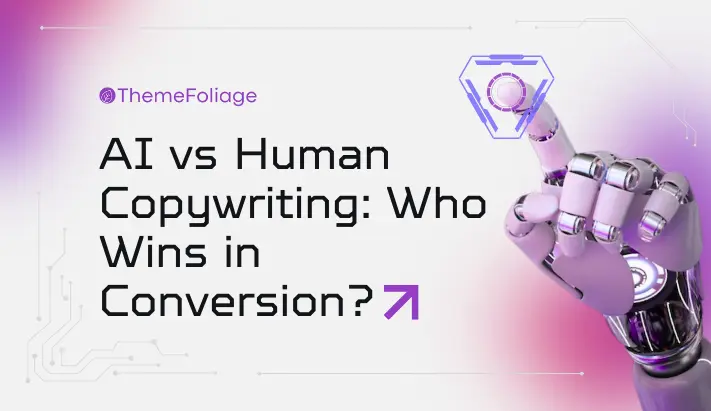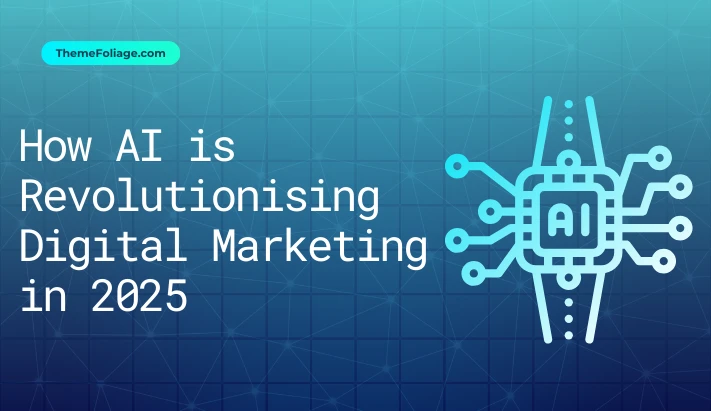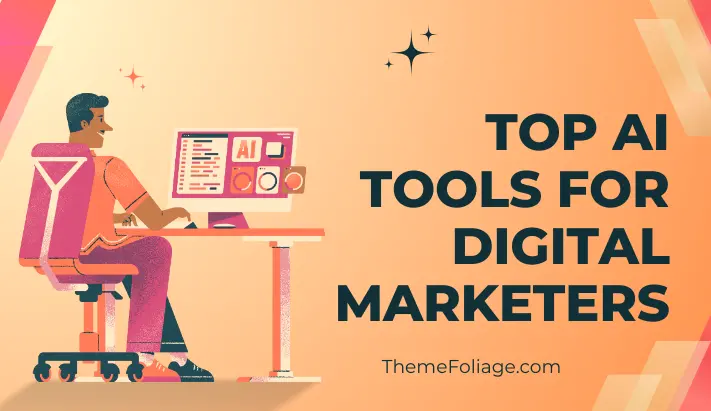In today’s digital-first marketing world, copywriting has become a crucial battleground for brands. With artificial intelligence tools like Jasper, Copy.ai, and ChatGPT delivering content at lightning speed, businesses are asking a bold question:
Can AI copywriting actually convert better than human-written content?
Marketers love AI for its speed, cost efficiency, and SEO support. But can machines truly rival the emotional intelligence, storytelling, and persuasion of seasoned human copywriters? To find out, we ran an A/B test, studied the psychology behind conversions, and broke down the strengths of both approaches. Here’s what we discovered.
The A/B Test: AI vs Human Landing Pages
We designed a simple experiment with two versions of a landing page for a fictional email marketing tool:
- Version A (AI): Written with Jasper.ai using Surfer SEO for keyword optimization.
- Version B (Human): Written by an experienced copywriter with over 10 years of expertise.
Metrics We Tracked
- Click-through rate (CTR)
- Bounce rate
- Conversion rate
- Average time on page
Results
| Metric | AI Copy | Human Copy |
|---|---|---|
| CTR | 4.8% | 5.2% |
| Bounce Rate | 38% | 32% |
| Conversion Rate | 2.1% | 2.6% |
| Time on Page | 1m 12s | 1m 45s |
Takeaway
Human-written copy slightly outperformed AI in engagement and conversions. Visitors spent more time reading the human copy, resonated with its storytelling, and converted at a higher rate. However, AI wasn’t far behind—and it produced usable content in a fraction of the time and cost.
The Strengths of AI Copywriting
AI shines in areas where speed, scalability, and data-driven optimization are essential. Here’s why many marketers are embracing it:
1. Speed & Scalability
AI tools can generate headlines, product descriptions, and ad copy in seconds. Need 20 variations for A/B testing? AI delivers instantly.
2. Cost Efficiency
A human copywriter may charge hundreds of dollars per project. In contrast, AI platforms offer affordable monthly subscriptions, making them ideal for startups and small businesses.
3. SEO Optimization
Many AI platforms integrate with SEO tools like Surfer SEO, offering keyword density checks, readability scoring, and SERP insights. This ensures content is not only engaging but also search-friendly.
4. Consistency
AI maintains tone and style across bulk content—whether you need 500 product descriptions or hundreds of ad variations. For brands that prioritize consistency, this is a huge win.
The Strengths of Human Copywriting
While AI is powerful, human creativity brings qualities that machines can’t replicate—at least not yet.
1. Emotional Intelligence
Humans understand humour, cultural context, and nuance. They know how to tap into the deeper emotions that trigger buying decisions.
2. Storytelling
Great copywriting is not just about informing—it’s about connecting. Humans can weave narratives that spark trust, empathy, and loyalty.
3. Persuasion Psychology
Experienced copywriters rely on frameworks like AIDA (Attention–Interest–Desire–Action) and PAS (Problem–Agitate–Solution) to craft persuasive messaging that resonates.
4. Adaptability
Markets change, trends evolve, and customers shift. Humans can quickly pivot messaging, adjust tone, and tailor copy to new circumstances in ways AI often struggles with.
When to Use AI vs Human Copy
Not every project requires the full depth of human creativity. Here’s a breakdown of when AI, humans, or both are the best fit:
| Scenario | Best Fit |
|---|---|
| Product Descriptions | AI |
| Blog Posts | Hybrid |
| Landing Pages | Human |
| Email Sequences | Hybrid |
| Social Media Captions | AI |
| Brand Storytelling | Human |
Pro Tip: Use AI to create first drafts and have a human editor polish the content for maximum impact.
Blending AI + Human Copywriting
Instead of choosing sides, the smartest marketers blend AI’s efficiency with human creativity. Here’s how to do it effectively:
- Use AI for Ideation
Let AI generate headlines, outlines, and topic variations. This jumpstarts the process and saves time. - Add Human Flair
Refine AI drafts by injecting brand voice, personality, and emotional resonance. - Optimize with AI Tools
Leverage Surfer SEO, Grammarly, or Hemingway to polish readability, grammar, and keyword usage. - Test Relentlessly
Run A/B tests on AI vs human copy. Let conversion data—not assumptions—guide your strategy.
Real-World Case Study: Jasper + Human Editor
A SaaS company experimented with blending AI and human input:
- Jasper generated blog drafts and landing page outlines.
- A freelance editor refined tone, added brand-specific storytelling, and ensured emotional connection.
The result:
- 40% increase in organic traffic
- 25% boost in email signups
- Faster content production cycles
This hybrid model delivered the best of both worlds—scalability with depth.
The Bigger Picture: AI as a Partner, Not a Replacement
AI copywriting is no longer a novelty—it’s a serious marketing tool. But our A/B test shows that while AI can produce effective, conversion-ready copy, it doesn’t fully replace human creativity. The nuance, emotional intelligence, and persuasion psychology of skilled copywriters still drive stronger results in high-stakes campaigns.
The bottom line:
- Use AI for scale, efficiency, and data-driven optimization.
- Use humans for storytelling, brand voice, and conversion-heavy content.
- Blend both for a balanced, high-performing strategy.
Final Thoughts
AI vs human copywriting isn’t about competition—it’s about collaboration. Businesses that learn to blend both approaches will see the biggest wins in engagement, conversions, and brand growth.
So, who wins? The answer isn’t AI or humans. The real winner is the marketer who knows when—and how—to use both.



